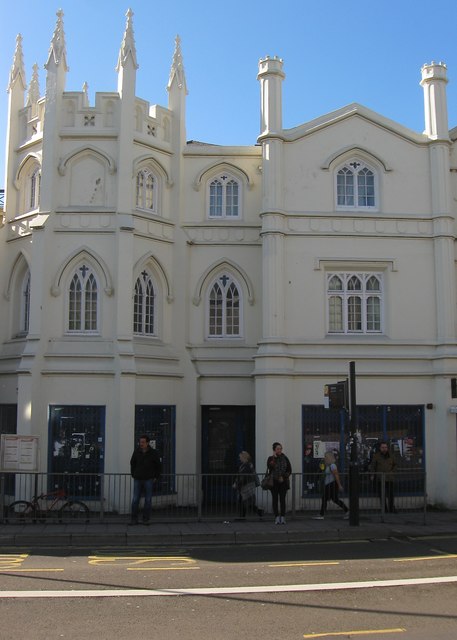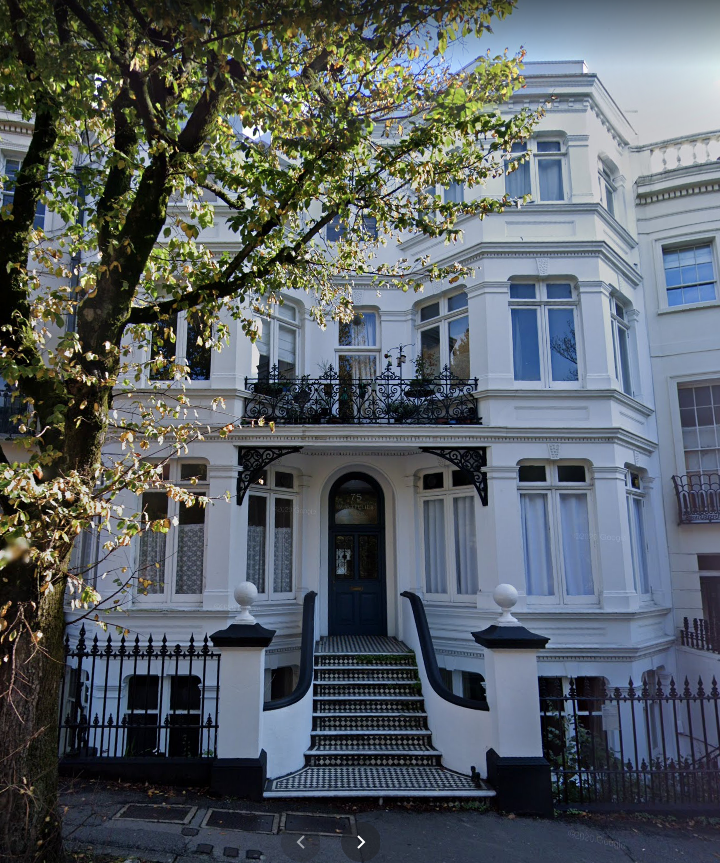Since first posting the Ryburgh Scandal and various other episodes of
Morris Fuller 's incumbency at St Andrew's on these webpages I have often
felt it somewhat uncharitable to be focusing so much on the various misadventures
of his life. During "lockdown" I have now had some opportunity to investigate him
further in order to try and redress the balance in some way. Whether I have
managed to do that remains to be seen, but to research his family background
was the obvious place to start and it soon came up with some quite revelatory
diegeses, as Morris himself would have no doubt described it.
Part l
The Family Background
A preliminary look at the family background of Morris Joseph Fuller places him
squarely in the realms of the modest grandeur and relative affluence of late
Georgian Middle Class Society, which inevitably provided an upbringing that
shaped his life and attitudes towards his fellow man.
He was the middle of the three sons with four older sisters, born to Thomas Fuller
(1792-12th October 1867) and Hannah Morris (Jan 31st 1790 -19 March 1866.)
who had married on the 29th October 1816. at All Saints Church, Lewes.
The two eldest daughters of the marriage, Hannah Morris Fuller and
Sarah Ann Fuller, had both died by 1823.
His mother, Hannah Fuller ran “A Ladies Establishment” that, according to the
1841 Census for Brighthelmstone, catered for 21 pupils with four female teachers,
the servant staff was comprised of 3 females and 1 male, plus Hannah and
her 5 children. His father, Thomas is described as “Currrier” (Leather merchant)
and from that brief encounter we can glean very little except to say he was
clearly outnumbered in his household.
The 1841 Census address is” Priory Western Road”. It was a building of such a
stature that it has survived to the present day and is now identified as
96, Western Road, Brighton:

Photograph by Simon Carey
https://www.geograph.org.uk/photo/4884034
There is a splendid image in the James Gray Collection of The Regency Society
showing the Priory 50 years after the Fullers were in occupation and a further
photograph taken 20 years after that.
It is posible to trace the progress of the school through the advertisment columns
of the Brighton Newspapers:
In January 1833:
MRS.FULLER
BEGS leave to inform her Friends and the Public, that she has removed her
ESTABLISHMENT for YOUNG LADIES from No. 2, Norfolk Square, Brighton,
to a large, airy, commodious House. 7, Ship Street, which will be opened for
the reception of Pupils on Monday, the 21st instant.
Later that year in July:
MRS. FULLER’S Establishment for the Board and Education of Young Ladies,
will be re-opened on Monday, the 22nd of July, 1833.
Accommodation for Parlour Boarders,
7 Ship Street, Brighton
On 28th September 1833 the following appeared:
Gothic House, Western-road, to be let on lease, including the use of the fixtures.—
For further particulars and cards to view apply at Mr. G. Adam’s Offices,
18 Old Steyne.
Whether this is the date that the Fuller School took up residence is not known,
but it does imply that they were not owners of such a distinctive house and as
it later transpires there are good reasons at this time why such a move might
have been made.
**********
An examination of the Census of 1851 shows that the “ESTABLISHMENT” is
apparently still thriving although by now in a different location. This was just
one of the 210 Private day schools that existed in the Borough at that time
and here described as Milton Hall in Montpelier Road Brighton. It is thought
that the family had been at Montpelier Road possibly since 1841/2 when
Thomas was elected High Constable of the Hundred of Whalebone (in effect,
Brighton) for the year April 1841-1842, even though prior to his election he was
styled as being of Ship Street.
The next advertisement we find appeared on July 17 1845, suggesting that the
school had to close for some reason:
BRIGHTON.-- MILTON HALL, ESTABLISHMENT FOR YOUNG LADIES,
conducted by Mrs FULLER, will be RE-OPENED on Wednesday the 30th of July.
Miss FULLER, pupil of Mr J. Basil Chatterton, gives Lessons on the Harp, either
in Schools or Private Families.
In subsequent Census returns it is identified as No 75 Montpelier Road and this
is the building shown below from a Google Street View. The adjacent buildings
on either side would appear to pre-date No 75, so it is possible that an original
Milton Hall was enclosed by the new adjacent buildings and shortly after was
demolished and replaced by the building pictured below?:

Courtesy Google Street Vew
The teaching staff were now two Governesses and a Teacher but still with
21 pupils. One of the pupils just happens to be Emily Edgington, the younger
sister of Morris Fuller’s future wife Helen. Two of the four servant staff moved
with the school and the single male now is 20 year old James Fuller whose
connection with the family, if any, is yet to be investigated.
Hannah still had two of her children living with her at this point:
Morris Fuller, now aged 20 and described as “Student at Brighton College” was
one and the other, 25 year old Elizabeth Sarah Ann Fuller (1825-1895) who we
find was to be married on July 1st the same year as a notice appeared in the
Brighton Gazette announcing the marriage to the Revd. Ebenezer Pleasance
Southwood who was probably curate of Newhaven at the time.
Ebenezer was the son of Baptist Minister, Revd,William Southwood and
Charlotte Markby, born on 20th February 1826 in the parish of St Mary Abbots,
Kensington. His birth was registered in the Dr. Williams’ Library,
Dissenter’s Register on 13 April 1826. His entry in Crockford’s gives no clue
as to his Dissenting origins.
They lived their lives at Newhaven Rectory and had no children. The Census
records visits from their Hooper nieces and from her sister, Esther Hannah.
Ebenezer had outlived Elizabeth Sarah Ann by 5 years when he died on
22 March1900. Probate was granted “to Thomas Fuller ( her brother) and
Robert Towner esquires Effects £12,219 7s. 11d.”
Hannah’s other children were variously settled elswhere:
In 1843, eldest daughter Esther Hannah had married her first cousin, Benjamin
Hooper and thus identified with her father’s trade and her mother’s family. These
connections brought the Morris Christian name into both families for a
second generation.
Benjamin was a Tanner and Leather Merchant as was his father,
Cleeve Jehohanan Hooper, He was admitted to the Freedom of the City in the
Company of Curriers of London in June 1845. By 1851, they had 4 children of
an eventual 13. Although married at St Nicholas' Brighton, the Hoopers were
a prominent local Dissenter family associated with both the Old Chapel
(Countess of Huntingdon’s Connexion) at Cliffe Lewes and the ensuing
Jireh Chapel in Lewes (Independent Calvinist),
The family’s birth registrations were
“Received, Filed, and Registered, acording to the custom in use among
Protestant Dissenters, at the Registry of Births kept at Dr. Williams’s Library,
Red-Cross Street, Cripplegate, London, this 13 day of March 1834”
Benjamin Hooper’s grandfather, Cleeve Hooper and Gt. Uncle Thomas Hooper,
Esther Hannah’s Grandfather, Joseph Morris and her Uncle Ebenezer Morris
were all Trustees of Cliffe Chapel and Jireh Chapel in Lewes
Older brother, Thomas (1828-1911) was a recently qualified "MD & MRCS not
practising" and lodging in a room at No 6 Dean Street South in Southwark very
close to Guy's Hospital. He returned to Brighton and more specifically to
Shoreham just down the coast where he spent his working and retired life.
He married Mary Downey Webbe on 6th October 1853 and they had 6 children
before his wife Mary died in 1873. He re-married the following year with no
further children. His UK Medical Directory entry for 1895 shows a conventional
and stable career:
FULLER. Thomas, Longcroft New Shoreham, Sussex—M.D. Aberd. 1859;
M.R.C.S. Eng. and L.S.A. 1851;(Guy’s); Mem. Brighton Med.Soc.;
Surg.-Lt. 1st Sussex V. Artill.; Admiralty Surg. and Agent for Shoreham;
Civil Surg. War Off. Med. Off. Workh. Steyning Union; late House Surg.
Brighton Disp.; formerly House Surg. Co. Hosp.
Younger brother Cornelius and his father, 58 year old Thomas Fuller are not
listed at this address in the Census of 1851. Thomas, however is to be found.
living on his own at 5 Chatham Place in Camberwell. The reasons why will be
made clear in Part 2.
We can resume contact with Cornelius on October 17th 1855 at St Giles
Cambourne, the day he married Eliza Sarah Hodd, the daughter of an
“Hotel Keeper” By the Census of 1861 he is trading as a tanner and leather
merchant employing 4 men and two boys. He died in 1882 aged 49 leaving a
large family, the youngest being 11.
When father, Thomas Fuller does show up again, he is recorded in the Census
of 1861 in the Leather Market District of Bermondsey. He is one of 4 lodgers
together with a family of 5, a cousin and a servant at No 9 Molesworth Square.
He is still listed as a Leather Factor. John Bloomfield, head of the house is a
Goods Office Railway Clerk.
The London Picture Archive has a view of the now demolished houses on
Western Place which formed one side of Molesworth Square
At the same time Hannah’s school was still occupying No 75 Montpelier Road,
though with a reduced number of pupils, just 8 from a household of 19. There
were however 4 adult Lady boarders helping to pay the way, 3 Governesses
and Hannah the “Principal of the Establishment”. Once again, three servants
and a footman supported the whole enterprise.
Hannah died on March 19th 1866 at 75 Montpelier Road, and was, in all
probability, still at the helm in spite of the " Heart Disease , Chronic Rheumatism,
Dropsy" that was her certified cause of death. The informant named on the death
certificate was a Jane Richardson and Hannah's Rank or Profession is given as
"Widow of Thomas Fuller Currier and Leather Seller". Thomas, however was
certainly still alive at this point and didn't die until October 12th 1867. Does this
represent an unreconcilable breakdown of the marriage and explain Thomas'
absence from the family home in the previous twenty years?
The 1871 Census return shows that the premises continued in use as a school
with 15 pupils and was run by Joseph D Gill. Schoolmaster B.A. from Ireland who
had been living at No 80 Montpelier Road in 1861 and working as a Tutor.
This brief Census based investigation highlights a number of apparent anomalies
or perhaps at least circumstance that seems occasionally at odds with being the
ultra-High Churchman we later encounter as the person of the
Revd. Morris Joseph Fuller.
I am very grateful for the assistance and interest shown by both Christopher Whittick and Regency Society Trustee, Kevin Wilsher in preparing this page.